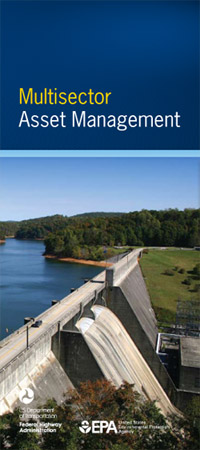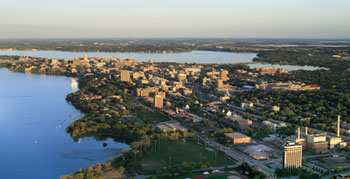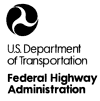Multisector Asset Management

- Better Data + Better Processes = Better Infrastructure Management Decisions
- What Is Asset Management?
- Five Core Questions
- The Calgary Experience
- An Asset Management Vision in Portland
- What Can Multisector Asset Management Do for You?
- Resources
Better Data + Better Processes = Better Infrastructure Management Decisions
From Portland, Oregon, and Saco, Maine, to Calgary, Canada, communities both large and small are realizing the benefits of implementing multisector asset management (AM) processes and data tools. These tools can be used to monitor, evaluate, and make more informed decisions about how to best maintain vital infrastructure sectors, including water, wastewater, highways, airports, and mass transit.
A new report available from the U.S. Environmental Protection Agency (EPA) and the Federal Highway Administration (FHWA), Multisector Asset Management Case Studies, looks at five cities in the United States and Canada that are applying AM across several sectors to better understand infrastructure conditions, consider the service requirements across multiple sectors, and make more informed choices about investment strategies. With an AM approach, optimal decisions are based on accurate data, economic analysis, and sound engineering. Choices are also supported by performance measures and performance-based goals.
“At the local level, cities are making decisions that involve multiple sectors. Asset management processes applied across the sectors result in innovations and greater efficiencies. Lessons learned from one sector offer practical advances that apply to another,” says Steve Allbee of EPA. While the individual asset types vary and different assessment techniques are utilized, the key AM practices and processes are the same across the transportation and water sectors.
 |
What Is Asset Management?

More than just implementing a pavement management system or a wastewater management system, AM provides a coordinated approach to managing infrastructure assets over the course of their entire life cycle, thus improving performance, increasing safety, and providing greater value to the community. The American Association of State Highway and Transportation Officials defines AM as a “strategic and systematic process of operating, maintaining, upgrading, and expanding physical assets effectively through their life cycle. It focuses on business and engineering practices for resource allocation and utilization, with the objective of better decisionmaking based upon quality information and well defined objectives.” The AM approach can help guide decisions as to what would be an effective mix of maintaining, repairing, renewing, or replacing components. “Being able to effectively manage all of our infrastructure assets, as a result of analysis of information from our management systems and consideration of routine maintenance, preservation, or replacement, is critically important in these troubling economic times,” says Butch Wlaschin, FHWA’s Director of Asset Management. As EPA notes in its Asset Management: A Best Practices Guide, “asset management is maintaining a desired level of service for what you want your assets to provide at the lowest life cycle cost.”
Five Core Questions
Whether a city or municipality is looking at highways, utilities, water, or other sectors, AM implementation comes down to asking five core questions:
- What is the current state of my assets?
- What is my required level of service/performance?
- Which assets are critical to sustained performance?
- What are my best investment strategies for both operations and maintenance and capital improvement?
- What is my best long-term funding strategy?
Cities and municipalities that have taken the lead in implementing AM have discovered that answering these questions provides the foundation for an AM plan, which establishes what is working well, where improvements are needed, and the type and quality of information required to establish that an envisioned course of action is the best choice available. “Asset management is the way to go,” says Michael Bolduc, Public Works Director in Saco, Maine. This city of 18,000 is applying AM principles across its wastewater and transportation sectors.
The Calgary Experience

Since 2004, the city of Calgary in Alberta, Canada, has operated a Corporate Asset Management Program (CAMP), which coordinates AM across 13 infrastructure-related business units. These business units include water, waste and recycling, roads, utilities, and transit. Calgary began embracing the multisector AM concept due to its rapid growth, with its population increasing by more than 12 percent between 2001 and 2006. The city recognized that it needed to balance its growth with infrastructure renewal needs, as the majority of its infrastructure was constructed from the 1960s until the mid 1980s. Asset Management Plans (AMPs) are being prepared for each business unit, with a long-term goal of combining all of the plans into one Corporate AMP, which will provide both an integrated plan for how services will be delivered and a citywide infrastructure investment strategy. The AM program is used to better justify capital and maintenance expenses to elected officials and the public.
Calgary has realized numerous benefits in applying AM, including obtaining both more and better validated information on the condition of various assets. This information can then be used to make project prioritization and budget allocation decisions. Another key benefit is the cost savings that are being realized. For example, the Water Resources business unit estimates that the AM approach to replacement and rehabilitation decisions has already saved $30 million in capital replacement costs and averted $16 million in main break repair costs over the past 10 years.
An Asset Management Vision in Portland

Having used AM tools in its transportation sector for more than 20 years, the city of Portland, Oregon, began applying AM to its water and wastewater sectors just over the past 5 years. Although the city’s various sectors currently use different AM frameworks, the city supports collaboration among the sectors and focuses on better aligning frameworks, with the long-term goal of developing a city-wide AM plan. Portland’s AM program also involves managing parks, affordable housing, and civic facilities. The city uses the International Infrastructure Management Manual as a resource document.
Portland’s Bureau of Planning develops annual reports on the status and condition of the city’s physical infrastructure. These reports document the number of assets; their condition, replacement value, and current service levels; and the cost of unmet needs. The reports are presented to Portland’s city council at the start of annual budget work sessions. Starting several years ago, the annual reports have included confidence level scores, which serve as a rough assessment of the quality of the data used in the development of the report. The report also now includes an assessment of business risk exposure, intended to weigh the probability of failure by the consequence of failure. The city council believes that these additions to the asset report have greatly improved the quality and usefulness of the report in the decisionmaking process.
Portland has recognized many benefits in applying AM principles, including creating a common language across the city’s various sectors.
What Can Multisector Asset Management Do for You?With regard to the infrastructure challenges facing your community, an AM program will provide critical knowledge as to your community’s assets and their condition. This knowledge will enable you to make better decisions and, when necessary, justify budget requests for maintenance and needed improvements. Ultimately, a multisector AM program will help infrastructure managers, elected officials, and community members focus on achieving the “triple bottom line”—communities that are socially desirable, environmentally safe, and economically sound far into the future. |
Resources
More information about how communities both large and small are implementing multisector AM is available in Multisector Asset Management Case Studies. The case studies were published jointly by EPA and FHWA and are available online at www.epa.gov/owm/assetmanage/index.htm or at assetmanagement.transportation.org (click on Topic Area b., “Innovations and Success”).
For additional information about multisector AM, contact Steve Gaj at FHWA, stephen.gaj@dot.gov, or Steve Allbee at EPA, allbee.steve@epa.gov.
FHWA-HIF-09-022




